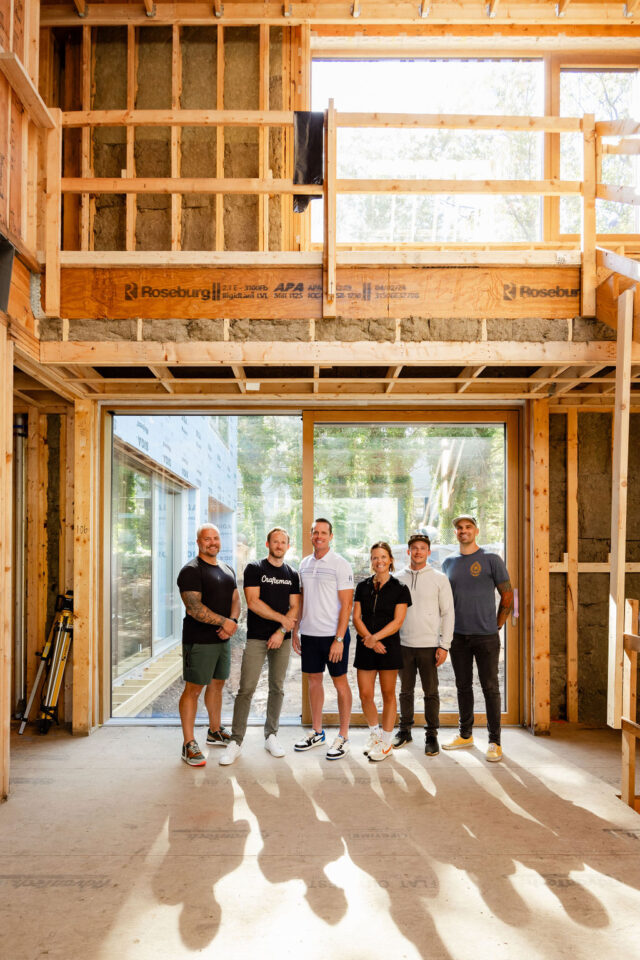

Contractor markup myths, actual prices, and what to search for in your bid – earlier than you’re knee-deep in change orders. That’s what this weblog publish is all about.
If you’re observing a contractor’s bid and see a 20 – 30% markup, it’s pure to marvel: “Is that this normal?” “The place is that cash actually going?” “Can I negotiate it down?” “I feel I’ll get different bids …”
Let’s break down what that contractor markup usually covers, the way it varies, and most significantly – what you have to be on the lookout for in your contractor bids to keep away from surprises later, and make sure you’re hiring the most effective contractor on your undertaking.
What Is a Contractor Markup?
A markup is a share added to the bottom price of labor, supplies, and subcontractors. It helps cowl:
- The contractor’s overhead
- Their revenue margin
- Their danger
- All of the behind-the-scenes prices of working your job
So that you’re in all probability pondering, okay, I get it. But additionally questioning, “How a lot is regular?” And the quick reply is – there’s no one-size-fits-all, and that’s the place issues get complicated. However we’ll do our greatest to interrupt it down.
What share do most Contractors cost?
- Residential Tasks: 15–40%
- Business Tasks: 10–20%
- With that being stated … Smaller Jobs: You could possibly see greater markups (40–50%) as a result of there’s nonetheless loads (if not much more) time, legal responsibility, and coordination concerned.
What impacts markup?
- Dimension of the undertaking (smaller jobs = greater %)
- Location (states with greater insurance coverage/taxes could push it up)
- Complexity (customized work, tight timelines, historic properties = extra $$$)
- Stage of transparency (some conceal it within the bid, others lay it out plainly)


What Does a Contractor Markup Cowl?
1. Challenge Administration & Supervision
From managing schedules and subcontractors to dealing with change orders, walkthroughs, and high quality management — your GC is doing far more than selecting up a device. They’re working the job from begin to end and ensuring no element is missed. This consists of:
- Every day website visits
- Managing subs and trades
- Scheduling inspections
- Fixing points earlier than they develop into disasters
2. Administrative & Workplace Operations
Even when your contractor isn’t understanding of a elaborate workplace, there are nonetheless actual enterprise prices behind the scenes:
- Estimating and bid preparation (which might take hours)
- Bookkeeping, invoicing, and payroll
- Challenge software program like Buildertrend or CoConstruct
- Telephones, emails, scheduling, coordination — aka all of the stuff you don’t see
3. Insurance coverage, Licensing, and Authorized Safety
Contractors pay hundreds a 12 months in insurance coverage to guard YOU and themselves. This consists of:
- Common legal responsibility insurance coverage
- Employees’ comp
- Builder’s danger insurance coverage
- Correct licenses and permits
With out these, your undertaking could possibly be on the hook legally. That 30% helps cowl these protections.
4. Instruments, Tools, and Autos
This consists of:
- Jobsite tools (ladders, saws, compressors — the large stuff)
- Upkeep, repairs, and gas
- Truck funds and trailers
- Changing instruments that get worn out each single job
Each undertaking takes a toll on instruments and autos, and good contractors spend money on high quality gear to do the job proper.
5. In-Home Labor & Help Workers
In case your contractor has a crew, that markup is paying their wages, too — from website supervisors to laborers who clear up and deal with punch lists. Expert labor issues, and having dependable folks on-site helps the job transfer easily.
6. Danger Administration & Guarantee Work
Stuff goes fallacious. It simply does — it’s a part of development.
Your contractor is carrying the burden of:
- Surprises (like mildew behind a wall or a cracked basis)
- Callbacks after the job wraps
- Delays and provider points
- Legal responsibility and duty if something fails
With out correct markup, your contractor is probably going chopping corners — or worse, strolling away from the job if one thing breaks down.
7. Revenue (AKA the Enterprise’s Lifeline)
Revenue is what’s left in spite of everything bills are paid. It’s not wage — it’s what retains the enterprise afloat, permits for reinvestment, and helps development. Most strong contractors purpose for 10–15% internet revenue after every thing shakes out. In case your builder isn’t worthwhile, they gained’t be round for lengthy — and that doesn’t assist anybody.
Hidden vs. Clear Markups
Some contractors will checklist their markup individually in your bid. Others will bake it into every line merchandise — like supplies or subs — and also you’d by no means know except you requested.
Neither strategy is fallacious — however transparency issues if you’re making an attempt to check bids. If one bid is decrease, it’d simply be as a result of:
- Design charges aren’t included
- There’s no website supervision price listed
- They neglected undertaking administration time (trace: that’s not free)
- Or… it’s simply not all there but and the change orders are coming
What to Search for in a Bid (It’s Not Simply the Markup)
If you’re reviewing a contractor bid, don’t simply fixate on the markup share. A ten% markup would possibly sound like a deal — till you notice they’ve constructed hidden markups into each single line merchandise. What actually issues is knowing what’s included and evaluating apples to apples. Two bids would possibly look comparable at first look, however one could miss key components that may later present up as change orders. Right here’s what to remember when reviewing your bids.
Supplies & Labor – This needs to be clearly damaged out — together with amount, high quality degree, and scope. If supplies really feel imprecise (like “tile” or “fixtures”), ask for specifics or pricing ranges. You need to know if that “tile” is primary ceramic or marble mosaic.
Subcontractors – Who’s doing the precise work? Are the subs licensed and insured? And are they accounted for within the bid — or are they going to be billed individually later? The labor portion of your job is a large price, so make sure that it’s seen and accounted for.
Challenge Administration – An enormous one which’s typically lacking. Who’s managing the trades, inspections, timelines, and distributors? That coordination doesn’t magically occur — and it positively shouldn’t be free. If this isn’t listed, the contractor may be planning to tack it on later or skip it fully (yikes).
Permits and Inspections – Each metropolis and undertaking sort has its personal guidelines. Some contractors embrace these charges, others go away them out — and a few simply anticipate you to deal with it. Ensure that that is addressed in writing, and don’t assume it’s lined except it’s spelled out.
Cleanup & Disposal – Who’s hauling away demo particles or cleansing up after drywall mud? If it’s not within the bid, you would possibly find yourself hiring another person to cope with it. Ask if dumpster leases, hauling charges, and post-job clean-up are included.
Design Charges – In case your bid doesn’t point out design companies — like drawings, layouts, or alternatives — ask. Some contractors work carefully with designers and invoice that work individually, whereas others embrace it inside their markup. Both method, don’t assume it’s free. Know when you’re anticipated to supply your individual plans or pay further for revisions.
Allowance Readability – Be cautious with imprecise allowances. A $5,000 line merchandise for a loo sounds nice till you notice that doesn’t cowl the customized vainness, freestanding tub, and brushed brass fixtures you’ve pinned on Pinterest. Get practical numbers primarily based in your style and preferences, otherwise you’ll be hit with overages quick.
Markup Disclosure – It’s completely truthful to ask your contractor what their markup is — and whether or not it’s listed within the complete or labored into every line merchandise. A clear contractor will stroll you thru it with out hesitation. In the event that they get cagey, imprecise, or defensive, that’s your cue to dig deeper — or stroll away.
So What Is a Truthful Markup?
What’s a Good Revenue Margin for a Contractor? Truthfully? A good markup is one that enables your contractor to:
- Be worthwhile, keep in enterprise.
- Ship a high-quality job inside shopper satisfaction.
- Cowl danger and legal responsibility.
- Nonetheless be in enterprise 2 years from now to again up their guarantee.
If you’d like a legit enterprise with methods, licensed trades, communication, and group — anticipate 25–35% markup on most residential jobs. Something decrease – WATCH OUT – as a result of it normally means:
- They’re underbidding, and unexperienced.
- They’ll upsell you later with an entire lot of change orders.
- Or they gained’t be worthwhile (and that by no means ends nicely), they usually gained’t be round to repair any wanted repairs publish undertaking, or perhaps even to complete your job.
You’re Not Simply Paying for Labor — You’re Paying for Peace of Thoughts. That 30% markup isn’t fluff. It’s safety. It’s planning. It’s expertise. And most significantly, it’s how a contractor runs an actual, sustainable, high-quality enterprise.
So if you see it? Take a breath. Ask questions if it’s essential — however understand it’s there for a purpose. As a result of chopping prices on the entrance finish normally finally ends up costing far more on the again finish. Markup isn’t a rip-off — it’s an actual price of doing enterprise. What issues most is:
- Transparency
- Readability on scope
- And a contractor you belief to not nickel-and-dime you later
As a result of the reality is: you’re not simply paying for supplies and labor. You’re paying for peace of thoughts, methods, timelines, craftsmanship, and somebody who’s obtained your again if issues go sideways.





